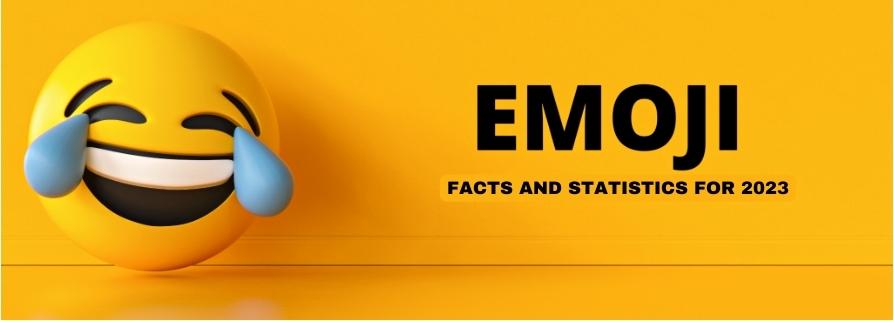
20 Apr TOP FACTS EMOJI AND STATISTICS IN 2023
Emojis have become a ubiquitous part of our online lives. Emojis are ideograms and smileys used in electronic messages and web pages. Emoji exist in various genres, including facial expressions, everyday objects, places, types of weather, animals, and even more. They are much like emoticons, but emojis are actual pictures instead of typography. They express emotions, convey messages, and add personality to our texts and tweets. With their popularity only increasing, it’s no surprise that there are some interesting facts and stats about emoji usage. This is why we decided to craft an ultimate list of the most fun and surprising emoji facts and stats.
EMOJI FACTS AND STATISTICS (EDITORS CHOICE)
- Emoji use has increased by 775% over the past three years
- 92% of millennials use emojis daily
- There are over 3,000 different emojis available today
- Including emojis in your social media post can increase engagement by 25.4%
- Women are 16% more likely to use emojis than men
- There is a 775% increase in emoji usage in business messages
Facts Emoji : 15 Top Emoji Statistics and Data for 2023
Facts Emoji #1: The first emoji was created in 1999 by Shigetaka Kurita.
In 1999, Shigetaka Kurita first designed the first emoji as a part of a project for Japan’s leading mobile communications company NTT DoCoMo. The word “emoji” comes from the Japanese words “e” (picture) and “moji” (letter or character). The first emoji was created to provide a way to convey emotion or information quickly and conveniently. Since then, emojis have become a trendy way to communicate, with new designs being added regularly. While some people may bemoan the use of emojis as a lazy form of communication, there’s no denying that they’ve become a staple in our digital lives.

Facts Emoji #2: Emoji use has increased by 775% over the past three years.
Emoji use has exploded in recent years, with a whopping 775% increase over the past three years. And it’s not just millennials who are using them – people of all ages are getting in on the action. Even brands are using emojis to connect with their customers.
Interestingly, emoji usage varies by country. For example, in the United States, the most popular emoji is the grinning face with sunglasses, while in France, it’s the heart eyes emoji. This shows that emojis can be a universal way to communicate despite the language barrier.
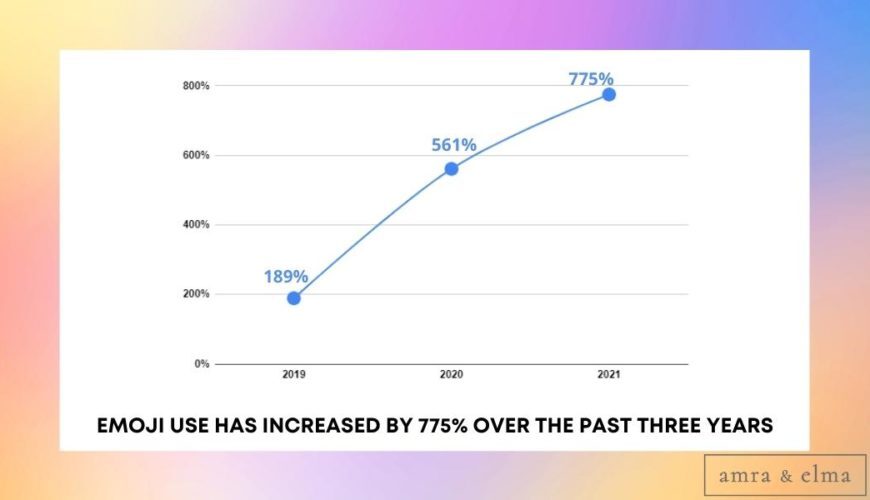
Facts Emoji #3: 92% of millennials use emojis daily.
Emojis have become a staple of millennial communication. According to a recent study by Pew Research Center, 92% of millennials use emojis on a daily basis. And it’s not just in personal texts and social media posts – emojis also show up in professional emails and even resumes. Given the ubiquity of emojis, it’s no surprise that they’re often used to convey complex emotions and ideas. Some emoji experts believe that they can be more effective than words in describing specific messages. So the next time you’re struggling to find the right words, consider reaching for an emoji instead. It could just be the perfect way to get your message across.

Facts Emoji #4: Women are 16% more likely to use emojis than men.
A study by Frontiers recently found that women are 16% more likely to use emojis than men. But what does this mean? Well, for one thing, it suggests that women are more expressive in general than men. But it could also mean that women are better at using non-verbal communication or enjoy using emojis more than men. Of course, it’s also possible that women feel more comfortable communicating with emojis because they’re less likely to be misinterpreted than words. Whatever the reason, it’s clear that emojis are becoming an increasingly important part of how we communicate – and women are leading the way.

Facts Emoji #5: 52% of Twitter posts include an emoji
A recent study by Pew Research Center has found that 52% of all Twitter posts include an emoji. This is a significant increase from the 6% of posts that contained an emoji just four years ago. Emoji are a popular way to express emotion or add a visual element to a text-based message. They can also help to clarify the tone of a message, which can be particularly important in a medium like Twitter where messages are often brief and direct. The use of emoji has been found to increase engagement, with posts that contain emoji receiving more likes and retweets than those that don’t. As a result, it’s not surprising that more and more people are using them in their tweets.
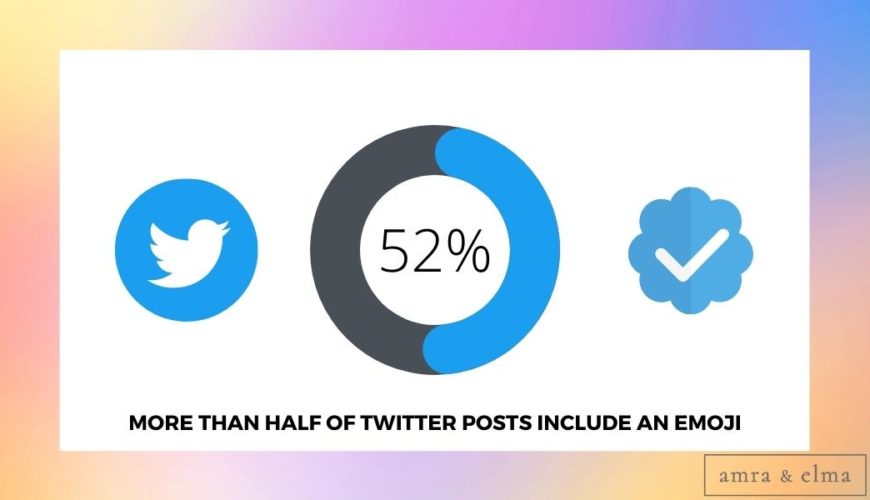
Facts Emoji #6: Negative emoji usage grows to 28.9% during the election week
According to Frontiers, during the week of the election, negative emoji use grew to 28.9%. This is a significant increase from the average of 22.1% negative emoji use during a non-election week. The study also found that users were more likely to use negative emoji when talking about politics, regardless of their political affiliation. This suggests that people are feeling increasingly frustrated and hopeless about the state of politics. However, it’s important to remember that emoji use is not a perfect indicator of mood or emotion. So while this data provides a useful snapshot of how people are feeling, it should not be used as a definitive guide to public opinion.
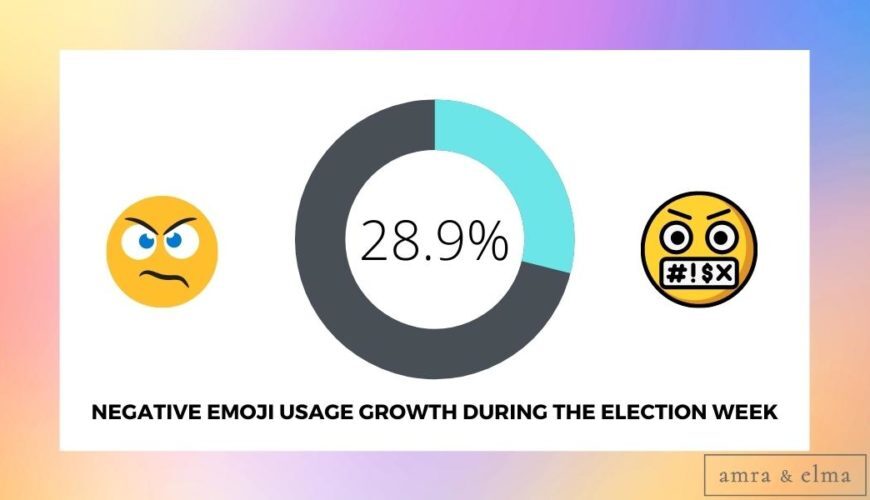
Facts Emoji #7: There is a 775% increase in emoji usage in business messages.
A study done by by Pew Research Center found that there has been a 775% increase in the use of emojis in business messages over the past year. While this may seem like a frivolous use of time and resources, emojis can be a valuable communication tool. They can help convey complex concepts quickly and effectively in a fast-paced work environment. Furthermore, they can help to build rapport and trust between team members. When used judiciously, emojis can be a powerful asset in the business world. So the next time you’re struggling to find the right words, reach for your favorite emoji instead.
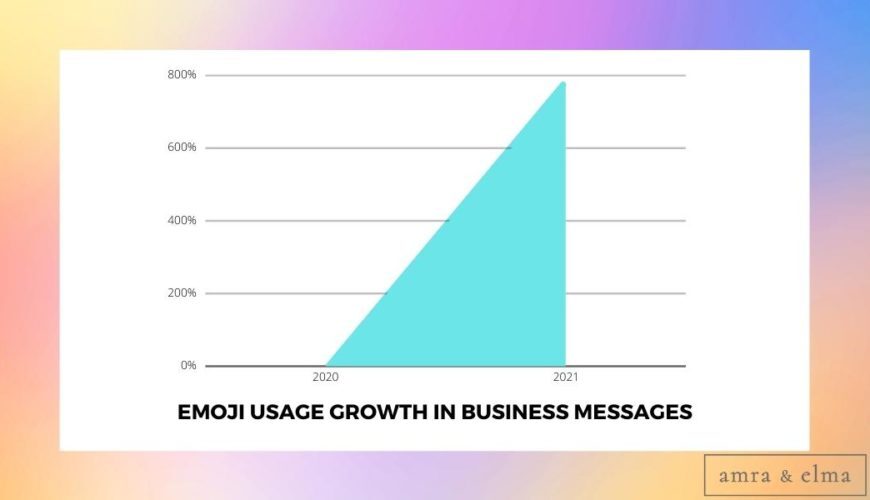
If you’re looking for a surefire way to increase engagement on your social media posts, you might consider adding an emoji or two. A recent study by Frontiers found that posts that included emojis saw a 25.4% increase in engagement over those that didn’t. The study also found that posts with multiple emojis saw even higher levels of engagement, with an average increase of 74%.
So why do emojis have such a significant impact on engagement? It could be because they help to add personality and emotion to the otherwise bland text. Or it could be because they make posts more visually appealing, which makes people more likely to stop and take notice.
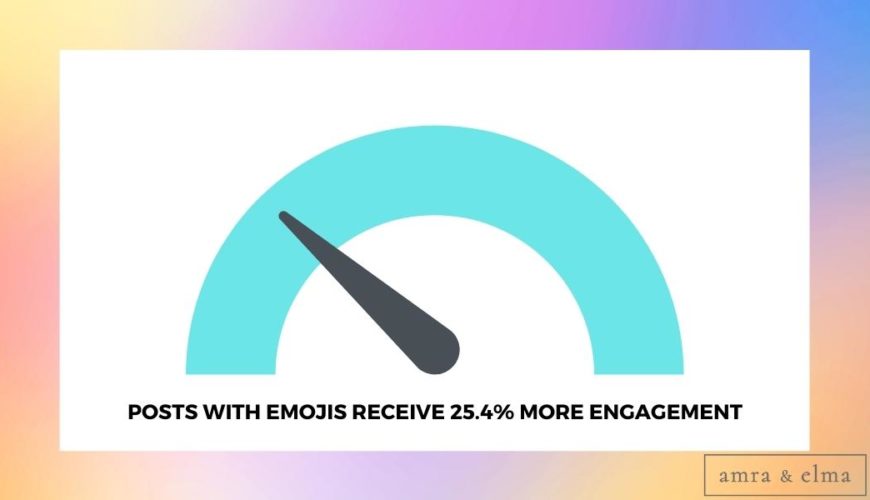
Facts Emoji #9: The most popular emoji is the “Face with Tears of Joy.”
The most popular emoji is the “Face with Tears of Joy” emoji, and it’s not hard to see why. Sometimes, words aren’t enough to express how you’re feeling. That’s where emojis come in. They allow you to communicate emotions concisely and universally. The “Face with Tears of Joy” emoji is the perfect way to express happiness, whether texting your best friend or tweeting your favorite meme. And it’s not just the most popular emoji – it’s also the most versatile. The “Face with Tears of Joy” emoji has got you covered whether you’re feeling happy, sad, or anything in between.
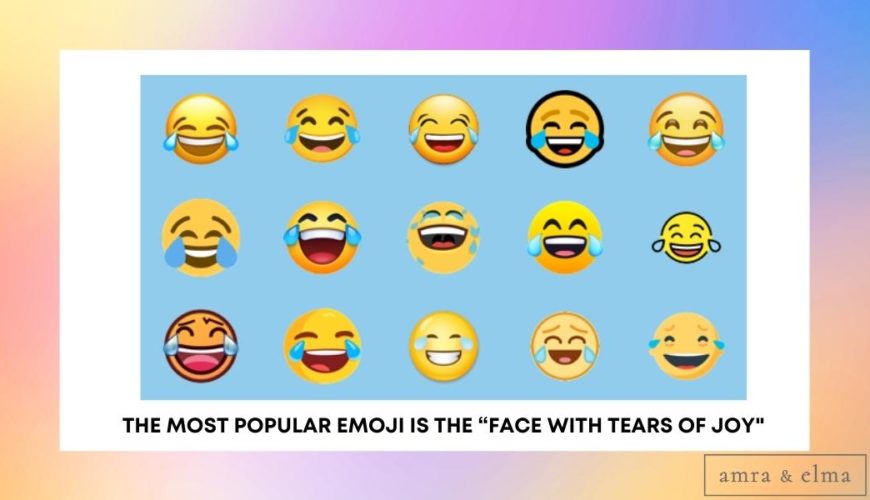
Facts Emoji #10: There are over 3,000 different emojis available today.
Over 3,000 emojis are available today, ranging from smiley faces to animals to transportation. With so many options, it’s no wonder that emojis have become an essential part of communication for billions of people. Whether used to add a little personality to a text message or convey an emotion that words cannot describe, emojis have become a universal language that everyone can enjoy.

Facts Emoji #11: In 2007 Google petitioned the Unicode Consortium to recognize emojis.
In 2007, a team at Google petitioned the Unicode Consortium to recognize emojis. The petitioners argued that emojis were a valuable form of communication that deserved to be given official status. They also noted that the existing system for encoding emojis was inefficient and led to compatibility problems. The Unicode Consortium agreed, and in 2010 they released the first version of the Unicode Standard that included emojis. Since then, emojis have exploded, becoming an essential part of digital communication. It’s hard to imagine a world without them!
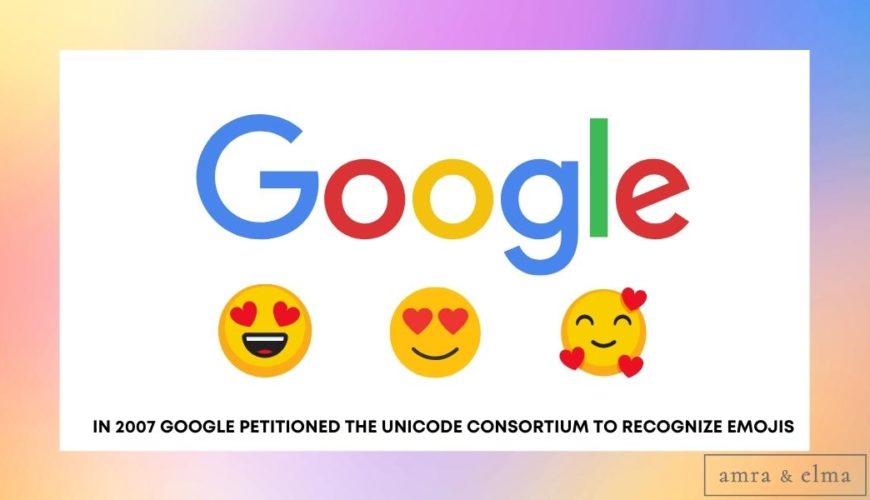
Facts Emoji #12: Oxford English Dictionary named an emoji its “Word of the Year” in 2015
In 2015, the Oxford English Dictionary made history by naming an emoji its “Word of the Year.” The little yellow face with a big grin and two eyes closed in ecstasy was selected to represent the evolving nature of language, as more and more people communicate using images and symbols rather than words. While some purists may decry the death of traditional language, the reality is that communication is constantly evolving, and emojis are simply the latest tool in our ever-expanding arsenal. In a world where we can instantly communicate with anyone, anywhere, it’s no wonder that this visual language is becoming increasingly popular. So whether you’re a fan of emojis or not, it’s time to embrace them as the new normal.

Facts Emoji #13: Apple was the first company to support emojis in 2011
In 2011, Apple made history by becoming the first company to support emojis. The move was a watershed moment for the tiny pictographs, which had been primarily confined to Japanese cell phones. With Apple’s backing, emoji quickly gained mainstream popularity, spreading to other platforms and becoming an essential part of digital communication. Today, it’s hard to imagine a world without emojis – but it might not have happened if not for Apple’s groundbreaking decision to support the tiny pictographs.
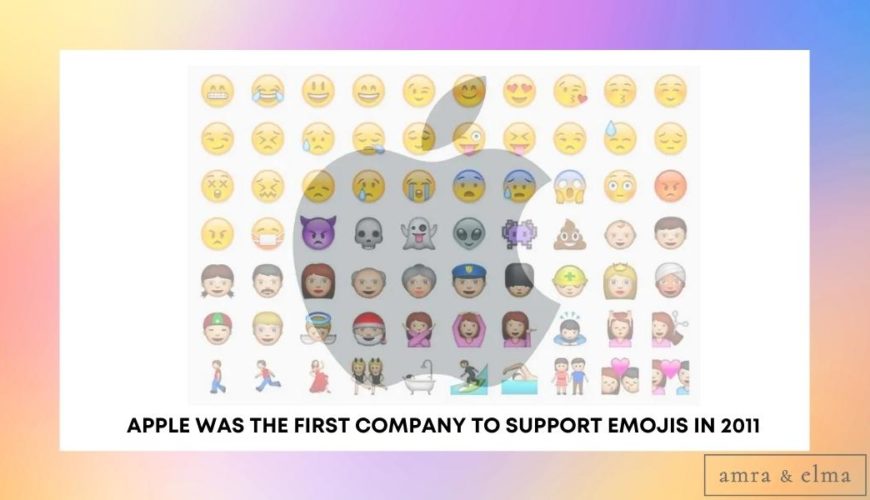
Facts Emoji #14: There is a World Emoji Day
On July 17th, the world comes together to celebrate World Emoji Day. This day is all about sharing our favorite emojis and celebrating how they have brought us closer together. From the first 🙂 to the newest 🦄, emojis have become essential for our online communication. On World Emoji Day, we take a moment to appreciate all of the tiny icons that help us express ourselves every day.
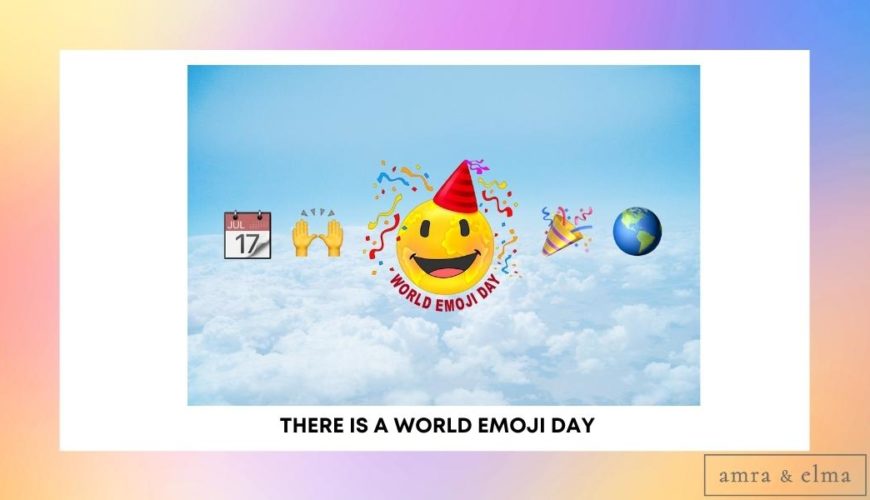
Facts Emoji #15: There is an official World Emoji Awards
That’s right – every year, the best and brightest emoji are celebrated in a star-studded ceremony. The event is open to the public, and anyone can submit their favorite emoji for consideration. Categories include “Best New Emoji” and “Emoji of the Year.” And who decides which emojis are deserving of these coveted titles? A panel of expert judges, of course. So if you’re an emoji fan, be sure to tune into the World Emoji Awards – you might see your favorite little icon take home the prize.
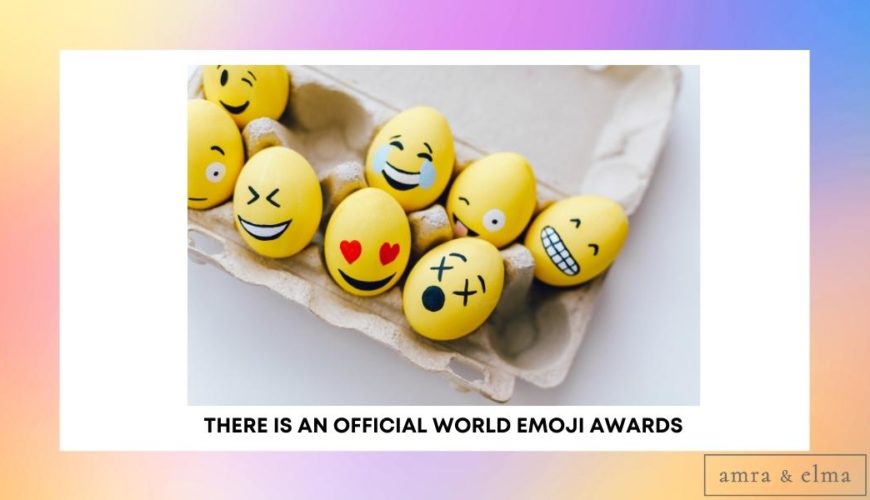
Final Words – Emoji Facts and Statistics
The humble emoji has come a long way since its inception in the late 1990s. Once used primarily to convey simple emotions or ideas, emojis have evolved into a versatile form of communication, capable of expressing a wide range of human experiences. And with over 3,000 different emojis to choose from, it’s not hard to see why. Whether you’re feeling happy, sad, angry, or anything in between, there’s sure to be an emoji that perfectly capture your mood. Since emoji usage has grown exponentially in recent years, it doesn’t seem to be slowing down anytime soon. So don’t be afraid to express yourself with emojis – they’re here to stay!
TOP EMOJI FACTS AND STATISTICS FOR 2023- FAQ’S:
What is the most popular emoji?
The “laugh out loud” 😂 emoji face is officially the world’s most popular emoji, according to researchers from Adobe who surveyed 7,000 users across the United States, the United Kingdom, Germany, France, Japan, Australia, and South Korea. The “thumbs up” 👍 emoji came in second, followed by the “red heart” ❤️ emoji.
What is the most common emoji in 2022?
An online emoji is typically a digital image that is used to express an emotion or reaction on the internet. It can be used in text messages, social media posts, and chat programs. There are many different types of online emojis, and each one can have a different meaning depending on the context in which it is used. However, the most common emoji used throughout the history of emojis is the smiley face. After that, the most common emoji are the winking face, and the heart eyes face. Emoji faces are used in online communication for a myriad of reasons.
One reason is that they add visual interest and can help to convey emotions that might be difficult to express with just words. Additionally, they can make messages more engaging and fun, which can encourage people to interact with them. Emoji faces can also help to lighten the mood in difficult conversations and show that the person sending the message is approachable and friendly. In short, emoji faces are a quick, easy way to add personality and emotion to online communication, and they have become increasingly popular due to their versatility and usefulness.
The most common emoji in 2022 is the face with tears of joy. This is because it is the most common emoji used on all devices, and it is predicted to continue to be the most common emoji in the years to come. The face with tears of joy was first introduced in Unicode 6.0 in 2010, and it has continued to be the most common emoji since then. It is often used to express happiness or relief, and it is a symbol of the joy that is universally understood. The most common emoji face in general is the smiley face. It was first introduced to the public in 1997 by AIM, and it quickly became popular because it is simple and versatile. People like it and made it the most common emoji because it is cheerful and optimistic, and they use it the most to communicate feelings of happiness, joy, and excitement.
Currently, the most common emoji is the tears of joy emoji face used by millions of people around the world in many different situations. It is used to express a wide range of emotions, from happiness and excitement to surprise and hilarious reactions. This emoji face has also been used to communicate sentiments such as happiness, ridiculousness, laughter, and more. The most common emoji face became so much popular because it is versatile and can be used in a variety of situations.
Overall, emoji faces can be used to show appreciation for a gift or to indicate that a person is laughing or joking, is sad or surprised, or has many other emotional states. Emojis have gained popularity in recent years because they allow people to communicate with each other in a fun and visual way. Emojis are a great way to show emotion and add personality to messages, and they can be used to communicate even when words are not enough. For instance, you might send a message with the most common emoji of a smiling face in place of saying “I’m very pleased for you!” if you don’t have the time or motivation to write out all of those words. Emojis can also help to lighten the mood of a conversation, and they can be used as a way to show support or appreciation. Overall, emojis make communication more fun and expressive, which is why they have become so popular.
What are some fun facts about emoji?
1) The emoji language is the world’s fastest growing language.
2) There are over 3000+ available emojis today.
3) “Emoji” translated means “picture character.”
4) There is an official World Emoji Day.
5) Around 92% of millennials use emojis every day.
What was the first emoji?
SoftBank, known as J-Phone at the time, released the SkyWalker DP-211SW mobile phone on the 1st of November 1997, with the world’s first known emoji set. The set included 90 distinct emoji characters, among them one of the most iconic emoji characters in the Unicode Standard, the poo emoji.
Who invented emojis?
In 1999, Shigetaka Kurita first designed the first emoji as a part of a project for Japan’s leading mobile communications company NTT DoCoMo. The first emoji was created to provide a way to convey emotion or information quickly and conveniently.
What age group uses emojis the most?
A recent study found that emojis are used most frequently by people aged 18-24. This is likely due to the fact that this age group is the most active users of social media, where emojis are commonly used. The study also found that people in this age group are more likely to use emojis in casual conversations, such as texting with friends. In contrast, older age groups are more likely to use emojis in formal settings, such as work emails. This may be because emojis are seen as more acceptable in casual settings, or because younger people are more familiar with using them. Whatever the reason, it’s clear that emojis are here to stay – and they’re being used most frequently by young adults.
What are emojis?
Emojis are ideograms and smileys used in electronic messages and web pages. The characters, which are used in place of words or as shorthand for entire phrases, first appeared in Japan in the 1990s. Since then, they have become increasingly popular worldwide, with early adopters such as WhatsApp and Facebook now incorporating them into their messaging platforms. Emojis can express a wide range of emotions and ideas, from happiness and love to sadness and anger. They can also be used to represent objects, activities, and places. In recent years, a number of companies have even started using emojis as part of their marketing campaigns. As the use of emojis continues to spread, it is likely that they will become an increasingly important part of global communication.
What is the most-used emoji in 2022?
In 2022, the most-used emoji will be the grinning face with smiling eyes. This emoji was first introduced in 2010, and it quickly became a favorite among users. Its simple design and friendly expression make it perfect for a wide range of purposes, from expressing happiness to showing appreciation. In recent years, the popularity of the emoji has only grown, as more and more people turn to them to communicate their feelings. With itsuniversal appeal, it’s no wonder that the grinning face with smiling eyes is set to be the most-used emoji in 2022.
Which is the rarest-used emoji?
According to a recent study, the rarest-used emoji is the “rolling on the floor laughing” emoji. Despite being one of the most popular emoji across a variety of platforms, it is used less than 0.1% of the time. In contrast, the most commonly used emoji is the “smiling face with heart-shaped eyes,” which is used over 5% of the time. The study also found that there are significant differences in emoji usage across different age groups, with younger users being more likely to use a wider variety of emoji than older users. However, regardless of age, the “rolling on the floor laughing” emoji remains one of the least frequently used.
What are the weirdest emojis?
Many people enjoy using emojis to communicate with friends and family. While most emojis are fairly straightforward, there are some that are quite strange. For example, the emoji for “pig” is actually a wild boar. The “monkey” emoji is actually a gibbon. And the “snail” emoji is actually a slug. In addition, there are several emojis that seem to have no specific meaning, such as the “zipper-mouth face” and the “rolling on the floor laughing” emoji. While some people may find these emojis confusing, others enjoy the challenge of trying to figure out their meaning. Ultimately, it’s up to each individual to decide which emojis they want to use.
Which emojis don't exist anymore?
While emojis have become an ubiquitous part of our online lives, not all of them have stood the test of time. In fact, some of the original emojis have been phased out in recent years, replaced by newer and more modern designs. One of the most notable examples is the “pile of poo” emoji, which was updated in 2016 to look less like an actual pile of feces. Similarly, the “eggplant” emoji was redesigned in 2018 to look more like an aubergine, after users began using it as a stand-in for a certain kind of male anatomy. While these changes may seem small, they reflect the ever-evolving nature of the emoji landscape. As new designs are introduced and old ones retired, our online interactions will continue to evolve along with them.
What are the best emoji combinations?
To create the best emoji combinations, it is important to understand how emoji work. Ideograms and smileys known as emojis and best emoji combinations are used in electronic messaging and on websites for entertainment and better digital expression. They are graphical representations of emotions, activities, objects, and concepts. There are over 1,500 emoji available on most platforms, and hundreds of effectively used and the best emoji combinations.
When creating the best emoji combinations, it is important to consider the context of the message. For example, when using emoji to represent an emotion, it is important to use the correct emoji for the sentiment to develop the best emoji combinations. Some of the most common and best emoji combinations are happy faces with hearts or kisses, sad faces with tears, and thumbs-up/down gestures.
Another thing to consider when creating the best emoji combinations is the use of color. Different platforms support different colors for emojis. For example, Apple’s iPhone supports blue, green, orange, purple, and pink emoji, and android devices support black and white emoji unless the user has installed a third-party keyboard that supports additional colors the best emoji combinations, it is important to make sure that all of the emoji in the sequence appear on the same platform with the same color palette.
Some other common and best emoji combinations include:
- 🎓💍: Graduation cap and ring – the best emoji combinations that show celebrating a graduation
- 🎊🎉: Party poppers – the best emoji combinations showing the celebration of a birthday or other special occasion
- 😊👌: Smiling face with sunglasses and raised hands – the best emoji combinations indicating approval or satisfaction
- 👩👧👦: Woman, girl, boy – the best emoji combinations representing a family or group
What are the most used best emoji combinations?
The use of the best emoji combinations has become incredibly popular in recent years. Many people use the best emoji combinations to express emotions or to communicate something difficult to put into words. There are a variety of different and the best emoji combinations that can be used, but some are more popular than others.
One of the most popular and best emoji combinations is the heart eyes emoji followed by the kissing lips emoji. This combination is often used to express love or happiness. Another popular emoji combination is the crying face emoji followed by the relieved face emoji. This is the best emoji combination that is often used to show relief or happiness after a difficult experience.
There are many other popular and best emoji combinations, but these are some of the most common ones. People use these best emoji combinations to express a wide range of emotions and feelings. When used correctly, the best emoji combinations can be a powerful way to communicate with others.
What is the most important statistics emoji for 2022?
The most important statistics emoji for 2022 is the Statistics Emoji Graph. This statistics emoji is a visual representation of data and trends that can be used to help individuals and businesses make informed decisions related to their finances, investments, and other matters. The statistics emoji graph is composed of bars or lines that represent different values in the data, along with labels indicating what each bar or line represents. This statistics emoji allows users to quickly identify information at a glance, such as market fluctuations, population growth rates, or sales figures. The statistics emoji Graph also includes various symbols to help convey additional information about the data – for example, arrows pointing upwards may indicate an increasing trend while arrows pointing downwards could signify a decrease in value.
In terms of its importance for 2022, the statistics emoji Graph enables users to stay up-to-date with relevant financial and economic trends faster than ever before. By providing insights into the state of markets or industries, individuals can make smarter investments while companies can use this data to inform their strategies. Additionally, this statistics emoji makes it easier than ever before for governments to track key metrics like the unemployment rate or income inequality levels over time.
The statistics emoji Graph also helps make complex datasets more accessible by simplifying them into visuals that are easy for everyone to understand. As such, the statistics emoji graph opens up more opportunities for collaboration between professionals from different backgrounds who might not have the technical skills needed to understand raw numbers or data points on their own. Moreover, this statistics emoji provides a valuable tool for journalists and researchers who need quick access to large amounts of data quickly to inform decisions or create compelling stories with accurate facts.
Overall, the statistics emoji Graph will be one of the most important tools in 2022 by enabling organizations and individuals alike to make better decisions based on real-time insights into markets and economies around the world. The statistics emoji also promises to revolutionize how people view and interact with complex datasets by simplifying them into visuals that are both easy to understand and visually stimulating at a glance. Lastly, this statistics emoji will provide an invaluable resource for researchers who need quick access to comprehensive datasets without having high levels of technical knowledge themselves.
The other important statistic emoji for 2022 is the data-driven smiley. This statistics emoji is an image of a smiling face with two dots for eyes and a line for a mouth, representing the concept of data being used to inform decisions and improve outcomes. The idea behind this statistics emoji is that data-driven decision-making can be fun and rewarding, and it encourages people to consider data when making decisions. The data-driven statistics emoji can be used in all sorts of contexts, from social media conversations to business presentations and even healthcare settings. This statistics emoji serves as a reminder that data should be respected, incorporated into our daily lives, and utilized to make informed decisions based on evidence rather than assumptions.

